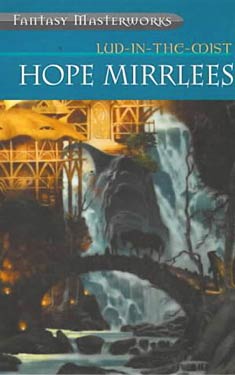[FONT=Verdana, Arial, Helvetica, sans-serif]His companion, a less imaginative type, sat with his legs spread wide over the long, coffin-shaped box which contained in its compartments the three atomic bombs, the new bombs that would continue to explode indefinitely and which no one so far had ever seen in action. Hitherto Carolinum, their essential substance, had been tested only in almost infinitesimal quantities within steel chambers embedded in lead. Beyond the thought of great destruction slumbering in the black spheres between his legs, and a keen resolve to follow out very exactly the instructions that had been given him, the man's mind was a blank.
[/FONT][FONT=Verdana, Arial, Helvetica, sans-serif]...and...[/FONT][FONT=Verdana, Arial, Helvetica, sans-serif]
Never before in the history of warfare had there been a continuing explosive; indeed, up to the middle of the twentieth century the only explosives known were combustibles whose explosiveness was due entirely to their instantaneousness; and these atomic bombs which science burst upon the world that night were strange even to the men who used them. Those used by the Allies were lumps of pure Carolinum, painted on the outside with unoxidised cydonator inducive enclosed hermetically in a case of membranium. A little celluloid stud between the handles by which the bomb was lifted was arranged so as to be easily torn off and admit air to the inducive, which at once became active and set up radio-activity in the outer layer of the Carolinum sphere. This liberated fresh inducive, and so in a few minutes the whole bomb was a blazing continual explosion. The Central European bombs were the same, except that they were larger and had a more complicated arrangement for animating the inducive.
Always before in the development of warfare the shells and rockets fired had been but momentarily explosive, they had gone off in an instant once for all, and if there was nothing living or valuable within reach of the concussion and the flying fragments then they were spent and over. But Carolinum, which belonged to the beta group of Hyslop's so-called 'suspended degenerator' elements, once its degenerative process had been induced, continued a furious radiation of energy and nothing could arrest it. Of all Hyslop's artificial elements, Carolinum was the most heavily stored with energy and the most dangerous to make and handle.
[/FONT][FONT=Verdana, Arial, Helvetica, sans-serif]...and...[/FONT][FONT=Verdana, Arial, Helvetica, sans-serif]
The catastrophe of the atomic bombs which shook men out of cities and businesses and economic relations shook them also out of their old established habits of thought, and out of the lightly held beliefs and prejudices that came down to them from the past. To borrow a word from the old-fashioned chemists, men were made nascent; they were released from old ties; for good or evil they were ready for new associations. The council carried them forward for good; perhaps if his bombs had reached their destination King Ferdinand Charles might have carried them back to an endless chain of evils. But his task would have been a harder one than the council's. The moral shock of the atomic bombs had been a profound one, and for a while the cunning side of the human animal was overpowered by its sincere realisation of the vital necessity for reconstruction.
[/FONT][FONT=Verdana, Arial, Helvetica, sans-serif]...and...[/FONT][FONT=Verdana, Arial, Helvetica, sans-serif]
[/FONT]In the map of nearly every country of the world three or four or more red circles, a score of miles in diameter, mark the position of the dying atomic bombs and the death areas that men have been forced to abandon around them. Within these areas perished museums, cathedrals, palaces, libraries, galleries of masterpieces, and a vast accumulation of human achievement, whose charred remains lie buried, a legacy of curious material that only future generations may hope to examine










